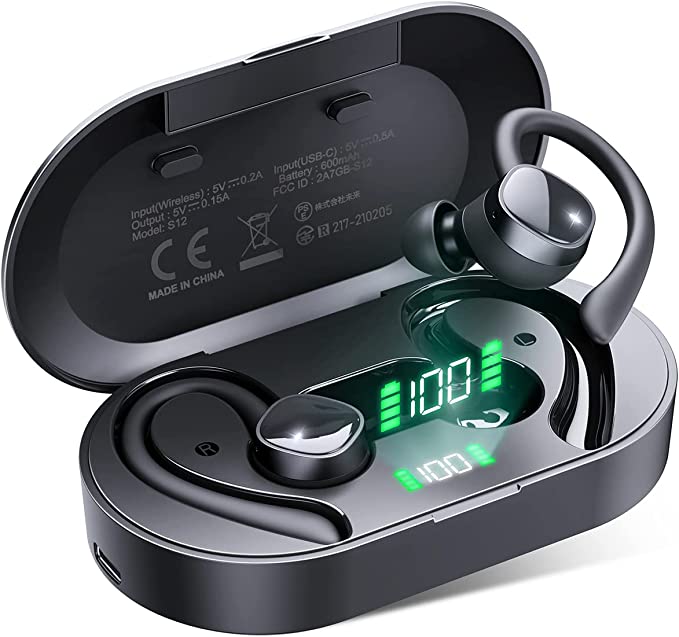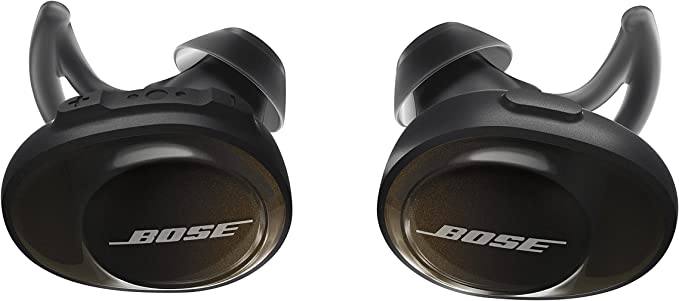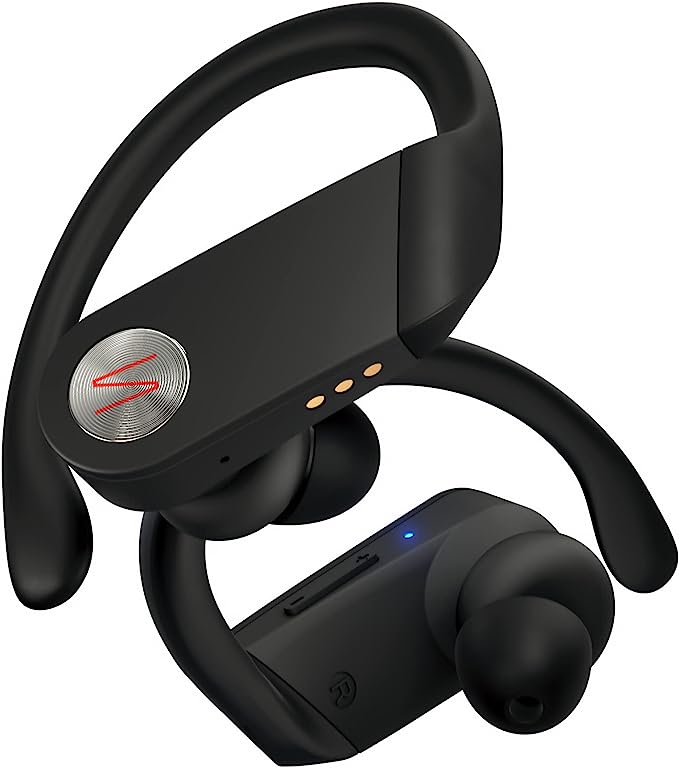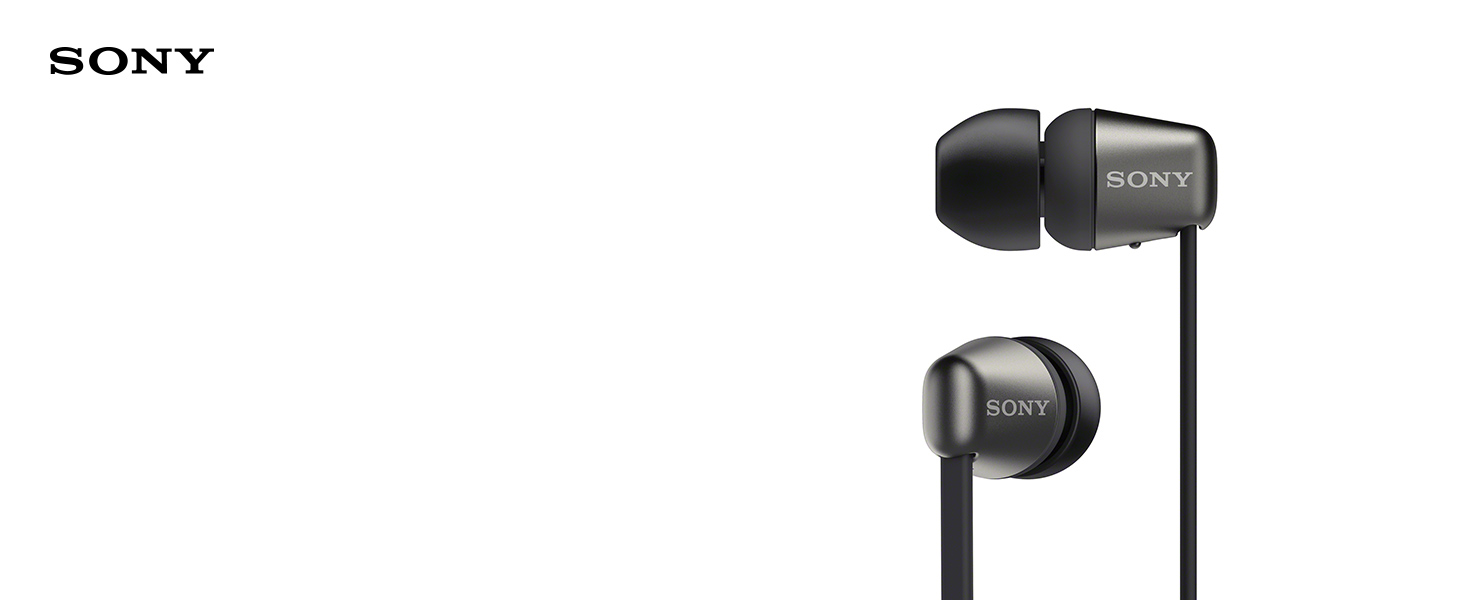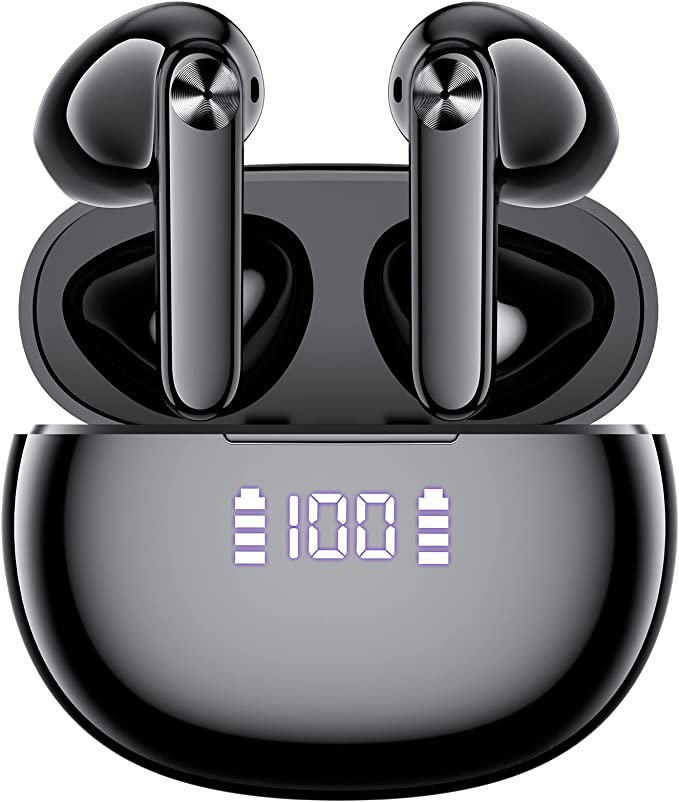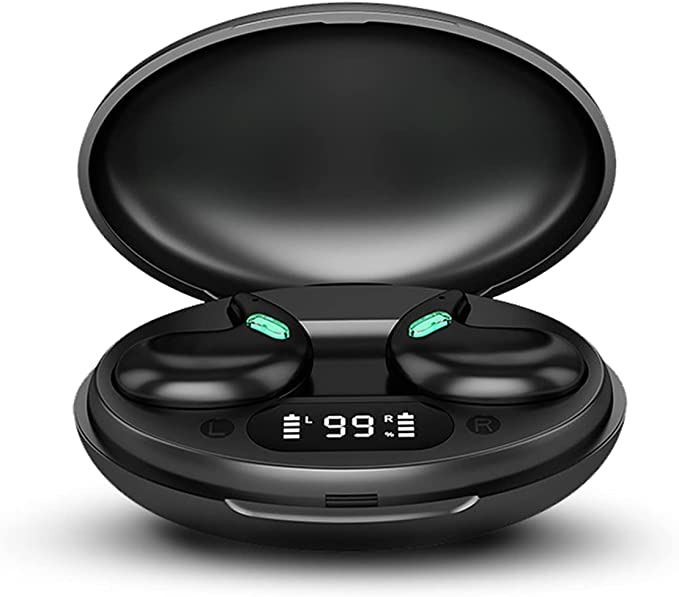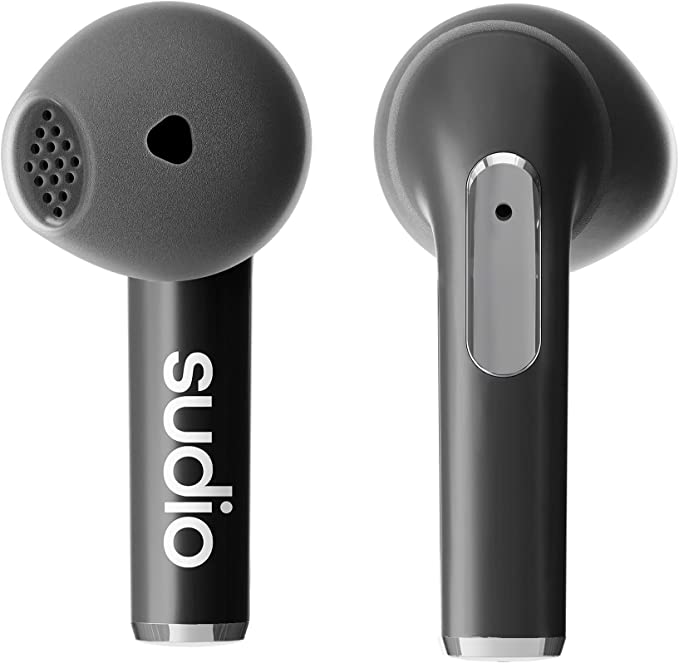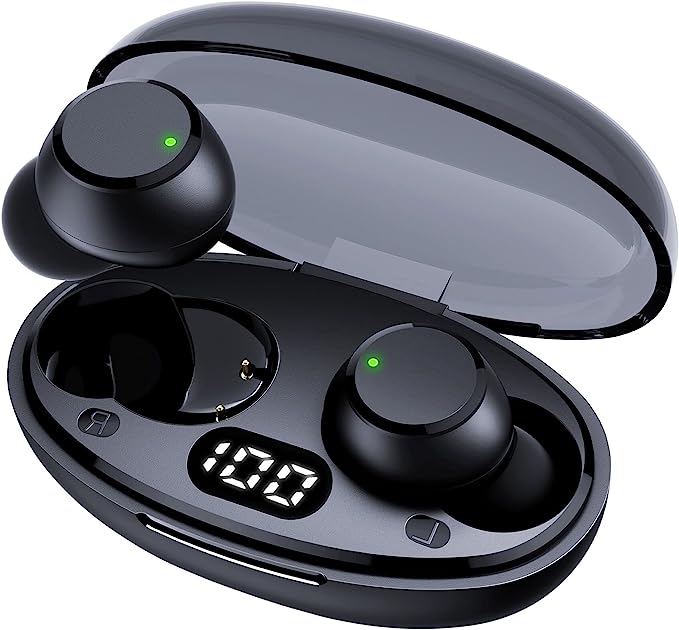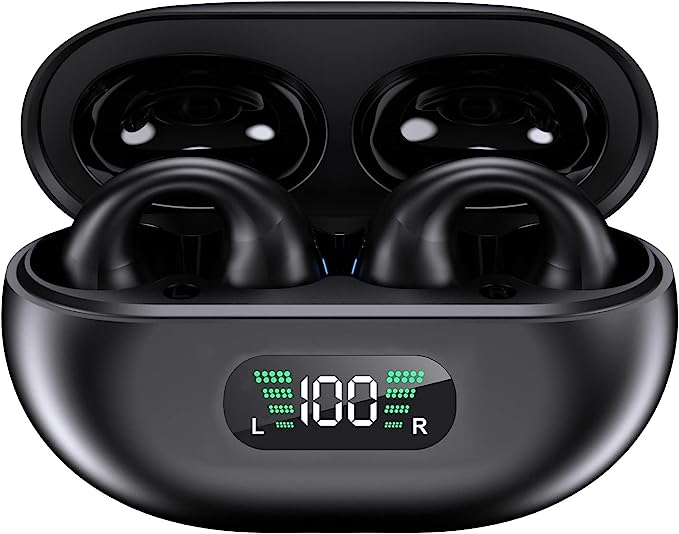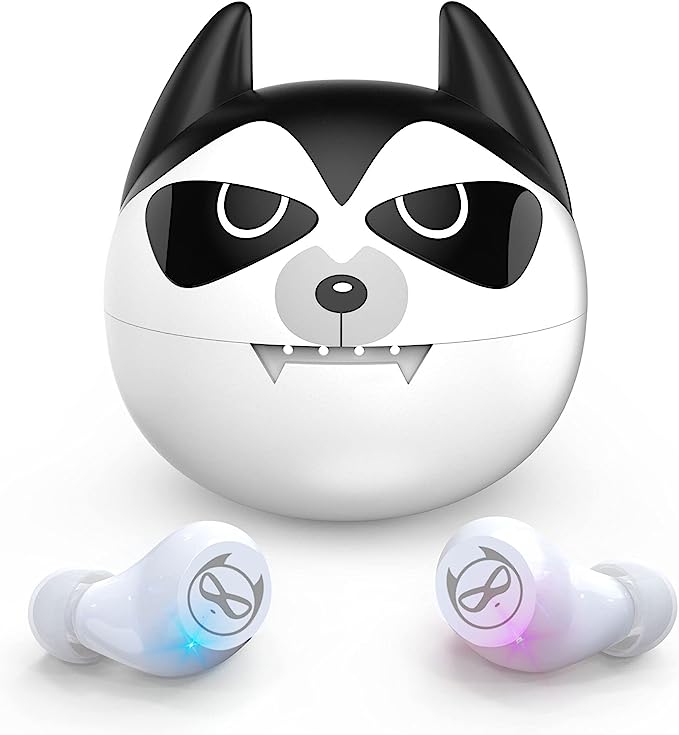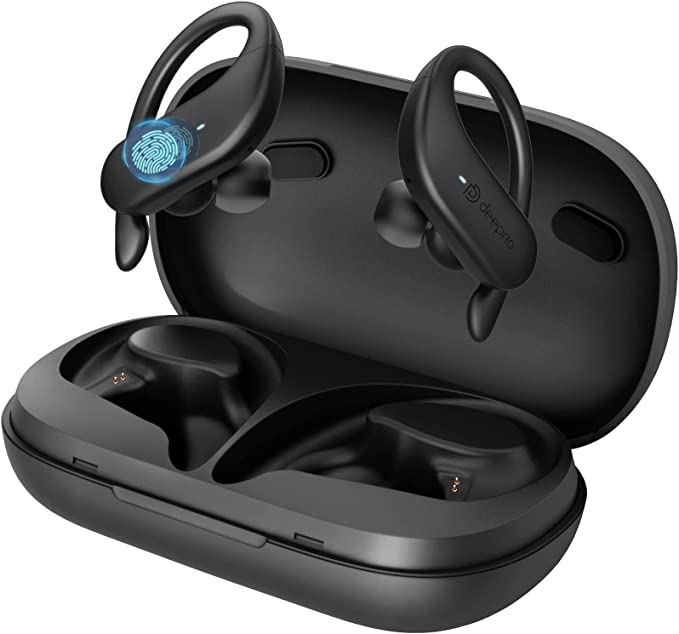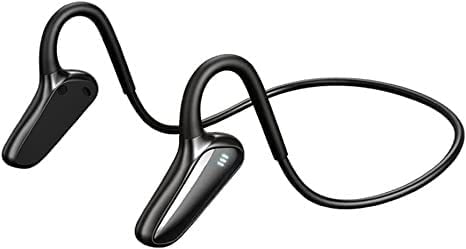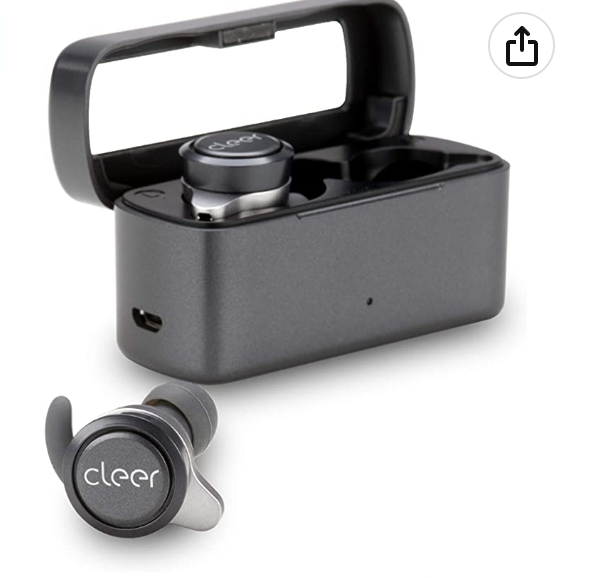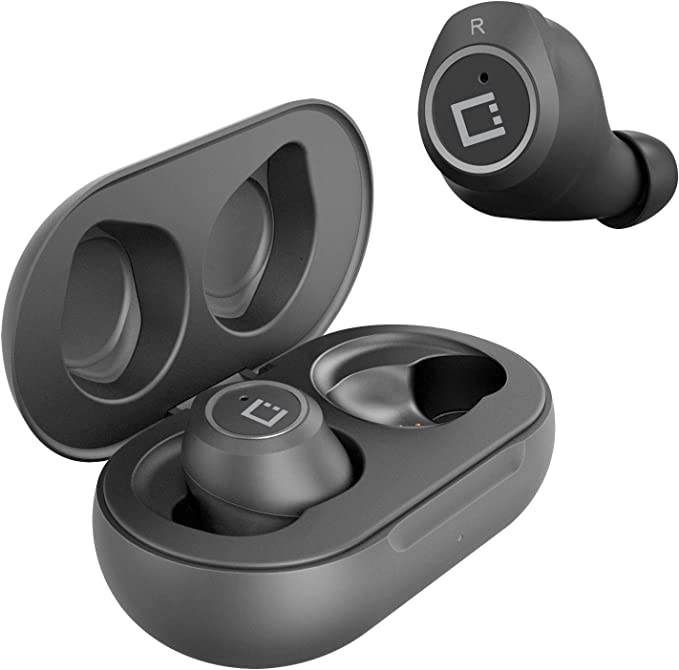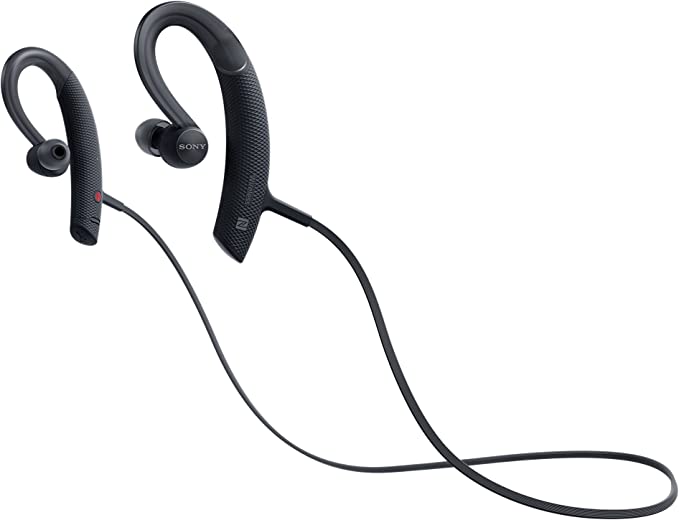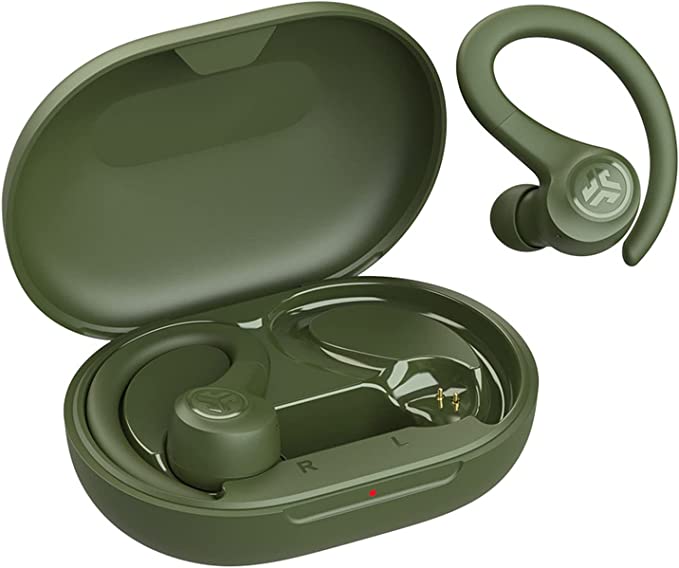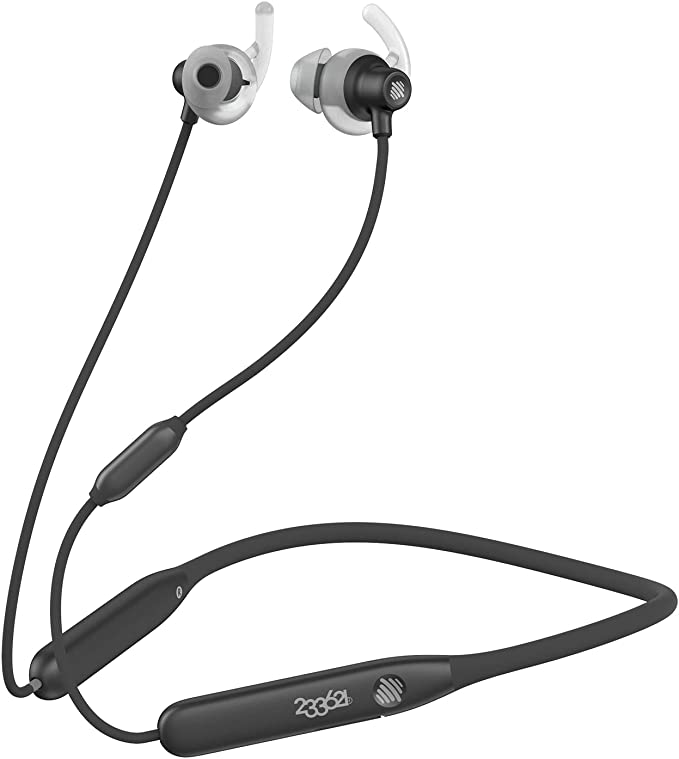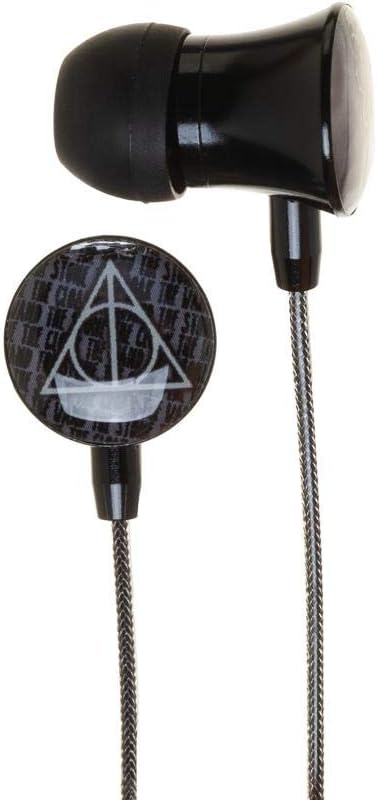Veho VEP-115-STIX-W Wireless Earbuds: Your Perfect Workout Companion
Update on Feb. 22, 2025, 7:27 a.m.
The Cord-Cutting Revolution: Embracing Wireless Freedom in Fitness
Remember that feeling? The rhythmic pounding of your feet on the pavement, the surge of endorphins, the… yank! Your wired headphones, once again, snagged on your arm or clothing, ripping the earbuds from your ears and interrupting your flow. It’s a frustratingly common experience for anyone who’s ever tried to exercise with traditional wired headphones. The constant battle with tangled cords, the limitations on movement, and the risk of damaging your precious (and often expensive) audio equipment – it’s enough to make you want to ditch the music altogether.
But thankfully, those days are fading fast. The rise of true wireless earbuds has revolutionized the fitness audio landscape, offering a level of freedom and convenience that was unimaginable just a few years ago. No more dangling wires to restrict your movements, no more accidental snags to disrupt your workout. Just you, your music, and your uninhibited drive to push your limits.

Meet the Veho Stix: Your New Workout Partner
The Veho VEP-115-STIX-W wireless earbuds are a prime example of this technological evolution. These sleek, lightweight earbuds are specifically designed for sports and exercise, offering a secure fit, water resistance, and the untethered freedom of Bluetooth connectivity. They’re designed to be your unobtrusive companion, delivering your workout soundtrack without getting in the way. But they’re more than just a convenient way to listen to music; they represent a significant leap forward in audio technology.

Bluetooth Unbound: The Science of Wireless Audio
Let’s delve into the magic behind that wireless freedom: Bluetooth. This ubiquitous technology, named after a 10th-century Danish king, Harald “Bluetooth” Gormsson, has become the standard for short-range wireless communication. It allows devices – your smartphone and your Veho Stix, for example – to exchange data over radio waves, creating a personal area network (PAN).
But how does that translate to sound? Your phone doesn’t magically beam music into your ears. The audio signal, which starts as a digital file (like an MP3 or a streaming track), is first converted into an analog signal. This analog signal is then encoded by a specific Bluetooth codec. Think of a codec as a translator, converting the audio data into a format that can be efficiently transmitted over the air.
There are several different Bluetooth codecs, each with its own strengths and weaknesses. The most common is SBC (Subband Coding), which is mandatory for all Bluetooth devices. However, SBC is known for its relatively lower audio quality due to its higher compression rate. Other codecs, such as AAC (Advanced Audio Coding) – commonly used by Apple devices – and aptX (developed by Qualcomm), offer improved audio quality with lower latency (the delay between the audio source and your ears). [Note: I need to verify which codecs the Veho Stix support. This information is crucial.]
The encoded audio signal is then transmitted via radio waves from your phone to the Veho Stix earbuds. The earbuds receive this signal, decode it back into an analog signal, and then amplify it to drive the tiny speakers (called drivers) inside the earpieces, producing the sound you hear.
The version of Bluetooth also plays a crucial role. Newer versions, like Bluetooth 5.0 and later, offer significant improvements over older versions, including faster data transfer speeds, lower power consumption (which translates to longer battery life), and increased range. [Note: I need to verify the Bluetooth version supported by the Veho Stix.]

Staying in the Zone: The Importance of a Secure Fit
When you’re pushing your physical limits, the last thing you want is your earbuds slipping, sliding, or falling out. A secure fit isn’t just about convenience; it’s also crucial for maintaining optimal sound quality. If the earbuds aren’t properly sealed in your ear canal, you’ll lose bass response, and the overall sound will be thin and tinny.
The Veho Stix, like most sports earbuds, are designed with features to ensure a secure and comfortable fit. This typically involves a combination of factors, including the shape of the earbud housing, the angle of the nozzle (the part that goes into your ear canal), and the choice of ear tips.
Ear tips are those small, replaceable pieces that come in different sizes and materials. Silicone is the most common material, offering a good balance of comfort, durability, and sound isolation. Some earbuds also include foam tips, which can provide a tighter seal and better noise isolation, but may be less comfortable for some users. [Note: I need to verify the types of ear tips included with the Veho Stix.] Finding the right size and material of ear tip is essential for achieving a secure and comfortable fit. It’s worth experimenting with the different options included to find what works best for your ears. The right fit will provide great noise reduction.
The ergonomic design of the earbud itself also plays a critical role. Some earbuds use “fins” or “wings” that hook into the contours of your outer ear to provide additional stability. [Note: I need to verify if the Veho Stix use fins or wings.]
Sweat the Small Stuff: Understanding Water Resistance
Sweat and electronics don’t usually mix. That’s why water resistance is a crucial feature for sports earbuds. But “water-resistant” can be a vague term. It’s important to understand what level of protection it actually offers.
This is where IP ratings come in. IP (Ingress Protection) ratings are a standardized system for classifying the degree of protection a device provides against the intrusion of solid objects (like dust) and liquids (like water). An IP rating consists of two digits: the first digit indicates the level of protection against solid objects, and the second digit indicates the level of protection against liquids.
For example, an IPX4 rating means the device is protected against splashing water from any direction. An IPX7 rating means the device can be submerged in up to 1 meter of water for 30 minutes. [Note: I need to find the specific IP rating for the Veho Stix. This is crucial information.]
The water resistance of earbuds is typically achieved through a combination of design features, including:
- Sealed housings: The seams and joints of the earbud housing are tightly sealed to prevent water from entering.
- Water-resistant coatings: A hydrophobic coating may be applied to the internal components to repel water.
- Mesh covers: A fine mesh may cover the microphone and speaker openings to prevent water from entering while still allowing sound to pass through.

Sound on the Move: Audio Quality and Sports
While a secure fit and water resistance are essential for sports earbuds, sound quality shouldn’t be sacrificed. After all, what’s the point of listening to music if it sounds terrible?
The sound quality of earbuds is determined by a number of factors, including:
- Drivers: These are the tiny speakers inside the earbuds that convert electrical signals into sound waves. The size and type of driver can significantly affect the sound quality. Generally, larger drivers can produce more bass, but this isn’t always the case. [Note: I need to find information on the driver size and type in the Veho Stix.]
-
Frequency Response: This refers to the range of frequencies (from low bass to high treble) that the earbuds can reproduce. A wider frequency response generally indicates better sound quality. [Note: I need to find the frequency response of the Veho Stix.]
-
Sound Tuning: This refers to the way the earbuds are engineered to emphasize certain frequencies. Some earbuds have a “bass-heavy” sound signature, while others are more “neutral” or “balanced.” The ideal sound signature for sports earbuds is often a matter of personal preference, but many people prefer a slightly boosted bass response to help motivate them during workouts. However, it’s important that the bass doesn’t overpower the other frequencies, resulting in a muddy or unclear sound.
When you’re exercising outdoors, especially in noisy environments, another factor comes into play: passive noise isolation. This refers to the ability of the earbuds to physically block out external sounds, simply by creating a seal in your ear canal. A good seal, achieved with the right size and type of ear tips, can significantly reduce the amount of ambient noise you hear, allowing you to focus on your music and your workout. This is different from active noise cancellation (ANC), which uses electronic circuitry to actively cancel out external sounds. While ANC is becoming increasingly common in headphones, it’s less common in sports earbuds due to its higher power consumption and potential impact on battery life. [Note: I need to confirm whether the Veho Stix have any form of noise cancellation, even passive.]
Power Play: Battery Life and the Charging Case
One of the biggest concerns with true wireless earbuds is battery life. Nobody wants their music to cut out in the middle of a workout. The Veho Stix, like most true wireless earbuds, address this challenge with a combination of built-in battery capacity in the earbuds themselves and a portable charging case.
The earbuds themselves contain small, rechargeable lithium-ion batteries. The battery life on a single charge can vary depending on a number of factors, including the volume level, the Bluetooth codec being used, and whether any additional features (like ANC, if present) are enabled. [Note: I need to find the stated battery life of the Veho Stix earbuds on a single charge.]
The charging case serves two purposes: it protects the earbuds when they’re not in use, and it provides additional battery life. The case itself contains a larger battery that can be used to recharge the earbuds multiple times. This effectively extends the total listening time you can get before needing to plug the case into a power outlet. [Note: I need to find the total battery life provided by the Veho Stix and the charging case combined.] The case typically charges via a USB connection (either USB-C or Micro-USB). [Note: I need to confirm the charging port type for the Veho Stix case.]
Control at Your Fingertips: Touch Controls and User Experience
True wireless earbuds, by their very nature, are small and lack physical buttons. This is where touch controls come in. The Veho Stix feature touch-sensitive surfaces on the earbuds themselves, allowing you to control various functions with a simple tap or series of taps.
These touch controls typically utilize capacitive sensors, similar to the technology used in smartphone touchscreens. These sensors detect changes in capacitance caused by the proximity of your finger. The earbuds’ internal circuitry then interprets these changes as specific commands, such as:
- Play/Pause music
- Skip tracks (forward and backward)
- Adjust volume
- Answer/End calls
- Activate voice assistant (e.g., Siri or Google Assistant)
[Note: I need to find the specific touch control gestures and functions for the Veho Stix.]
The advantage of touch controls is that they allow for a sleek and minimalist design, without the need for bulky buttons. However, they can also have some drawbacks. They can sometimes be accidentally triggered, especially during intense exercise. And they may be less responsive when your fingers are wet or sweaty. It’s important to learn the specific touch gestures for your earbuds and to practice using them to avoid accidental commands.
Beyond the Music: The Built-in Microphone
The Veho Stix earbuds also include a built-in microphone. This allows you to take calls without having to remove the earbuds or reach for your phone. The microphone is typically a small, MEMS (Micro-Electro-Mechanical System) microphone, chosen for its compact size and low power consumption.
The microphone’s performance can be affected by a number of factors, including its placement on the earbud, the surrounding environment (wind noise, for example), and the quality of the microphone itself. Some earbuds use multiple microphones and noise-canceling algorithms to improve call quality, especially in noisy environments. [Note: I need to determine if the Veho Stix use any noise-canceling technology for the microphone.]
In addition to calls, the built-in microphone also enables the use of voice assistants, such as Siri or Google Assistant. This allows you to control your music, make calls, send messages, and access other information using voice commands, all without having to touch your phone. This can be particularly useful during workouts, when your hands may be occupied or sweaty.
Taking Care of Your Tech: Maintenance and Longevity
To keep your Veho Stix earbuds performing at their best and to extend their lifespan, proper maintenance is essential. Here are a few tips:
- Clean the earbuds regularly: Sweat, earwax, and other debris can accumulate on the earbuds, affecting sound quality and hygiene. Use a soft, dry cloth to wipe down the earbuds after each use. For more stubborn dirt, you can use a slightly damp cloth (make sure the earbuds are completely dry before putting them back in the charging case).
- Clean the ear tips: Remove the ear tips and wash them with mild soap and water. Rinse them thoroughly and let them dry completely before reattaching them to the earbuds.
- Store the earbuds in the charging case: When you’re not using the earbuds, store them in the charging case to protect them from damage and to keep them charged.
- Avoid extreme temperatures: Don’t expose the earbuds or the charging case to extreme heat or cold, as this can damage the batteries.
- Check the warranty: Familiarize yourself with the warranty provided by Veho. This will give you information about what is covered in case of defects or malfunctions. [Note: I need to find information about the Veho Stix warranty.]
The Future is Wireless: Emerging Trends in Audio
The world of wireless audio is constantly evolving. Here are a few emerging trends to watch out for:
- Improved Bluetooth codecs: New codecs are being developed that offer even better audio quality and lower latency.
- Longer battery life: Advances in battery technology are leading to longer battery life for both earbuds and charging cases.
- More sophisticated noise cancellation: Active noise cancellation (ANC) is becoming more effective and more common in earbuds.
- Spatial audio: This technology creates a more immersive, three-dimensional sound experience.
- Health and fitness tracking: Some earbuds are starting to incorporate sensors that can track heart rate, activity levels, and other health metrics.
- Lossless Audio: The transmittion of lossless audio over Bluetooth.
Conclusion: Finding Your Perfect Audio Fit
The Veho VEP-115-STIX-W wireless earbuds represent a significant step forward in the evolution of fitness audio. They offer a compelling combination of wireless freedom, water resistance, and a secure fit, making them an excellent choice for anyone who wants to enjoy their music while exercising. However as all products do, they likely have some shortcoming to consider. [Note: I will need to add any potential negative points once more details are found.]
By understanding the technology behind these earbuds – from Bluetooth and codecs to IP ratings and touch controls – you can make a more informed decision about whether they’re the right fit for your needs and preferences. Remember that the best earbuds for you are the ones that provide the best combination of comfort, sound quality, features, and value for your individual needs. Ultimately, the goal is to find an audio companion that enhances your workout experience, rather than detracting from it.
